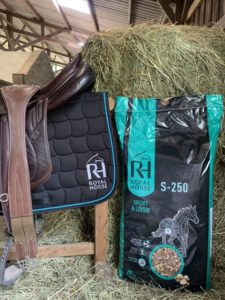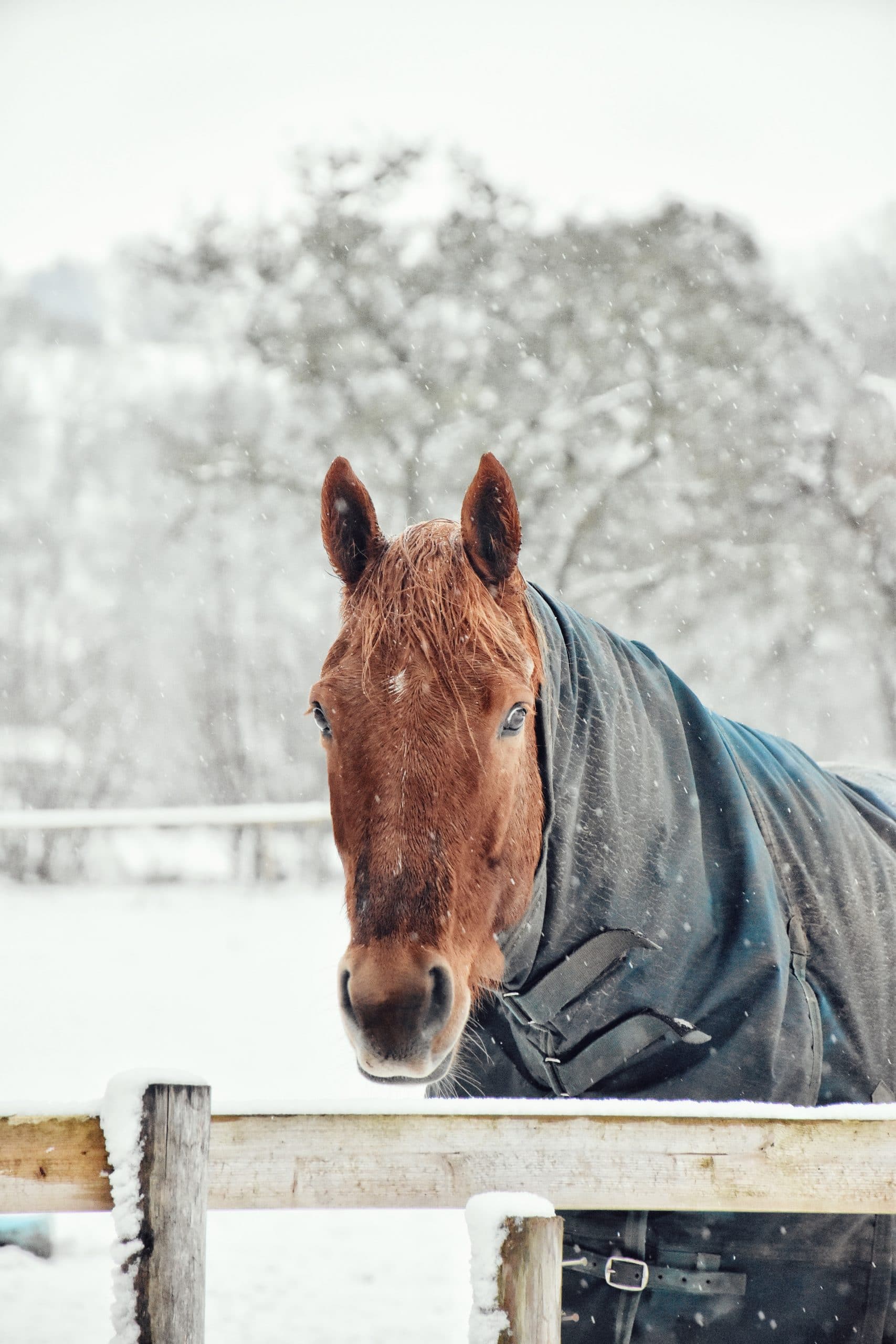Is it necessary to increase the ration of the horse in the meadow in winter ?
Seasonal changes have a strong impact on the physiology of horses living in pasture, especially in winter. The quality of the grass will deteriorate and its quantity will decrease.
The drop in temperature (especially below 0°) will also affect the horse’s thermoregulation and will encourage its metabolism to burn more energy (10% more on average) to maintain its body temperature. It is therefore necessary to compensate for this loss by providing more energy in the diet of your horse in the pasture, the S-250: supplementary forage feed in a flaked mixture and S-200: supplementary forage feed in pellets, are the most suitable products.

Monitor the horse’s water supply in the meadow
Make sure your horse always has water available. When temperatures drop below 0°, water can freeze and prevent him from accessing it. A horse in the pasture in winter will not drink water that is too cold, so it may become dehydrated. Furthermore, drinking water that is too cold can cause colic. Ideally, the water should be warmed up during the coldest periods of the winter.
What is the ideal ration for a horse living in a meadow in winter ?
Your horse in the meadow in winter will need good quality fodder (meadow hay, alfalfa hay, wraps), as grass becomes scarcer. You can provide him with about 10 kilos per day for a 500 kilos horse. If your horse was not supplemented the rest of the year with a concentrated feed, you can introduce it gradually in his ration to help him stay in condition. If your horse is already on a concentrate feed, you can increase the amount slightly or change to a higher fat feed. If you only visit your horse once a day, the quantity of his meal should not exceed 4 or 5 liters, as the horse’s stomach has difficulty digesting large quantities. Ideally, you should be able to divide the meals into several portions. You can also provide your horse with mineral blocks enriched with vitamins, which will compensate for the deficiencies of grass and forage.
However, if your horse works less during the winter, it may not be necessary to modify its ration, its energy expenditure being lower.
How to help your horse to bear the winter ?
In order to compensate for the energy burned by your horse, you can help him by putting a blanket on him, as his winter coat is not always sufficient to keep him warm. Depending on the weather, you can use different weights of blankets. If your horse continues to be physically active during the winter, shearing may be necessary. With the winter coat, he will sweat a lot when he is at work, and putting him back in the pasture after sweating exposes him to cold spells. Shearing allows the horse to continue its physical activity in complete serenity, but it will be necessary to put a winter blanket on it when it returns to the pasture, and to use a kidney cover during the work sessions. How to properly shear a horse? The most common shearing method is to shear the horse’s body and leave only the head and limbs. To avoid the use of a systematic lining, you can also leave the winter hair on the whole length of the back to make a “natural” lining.



